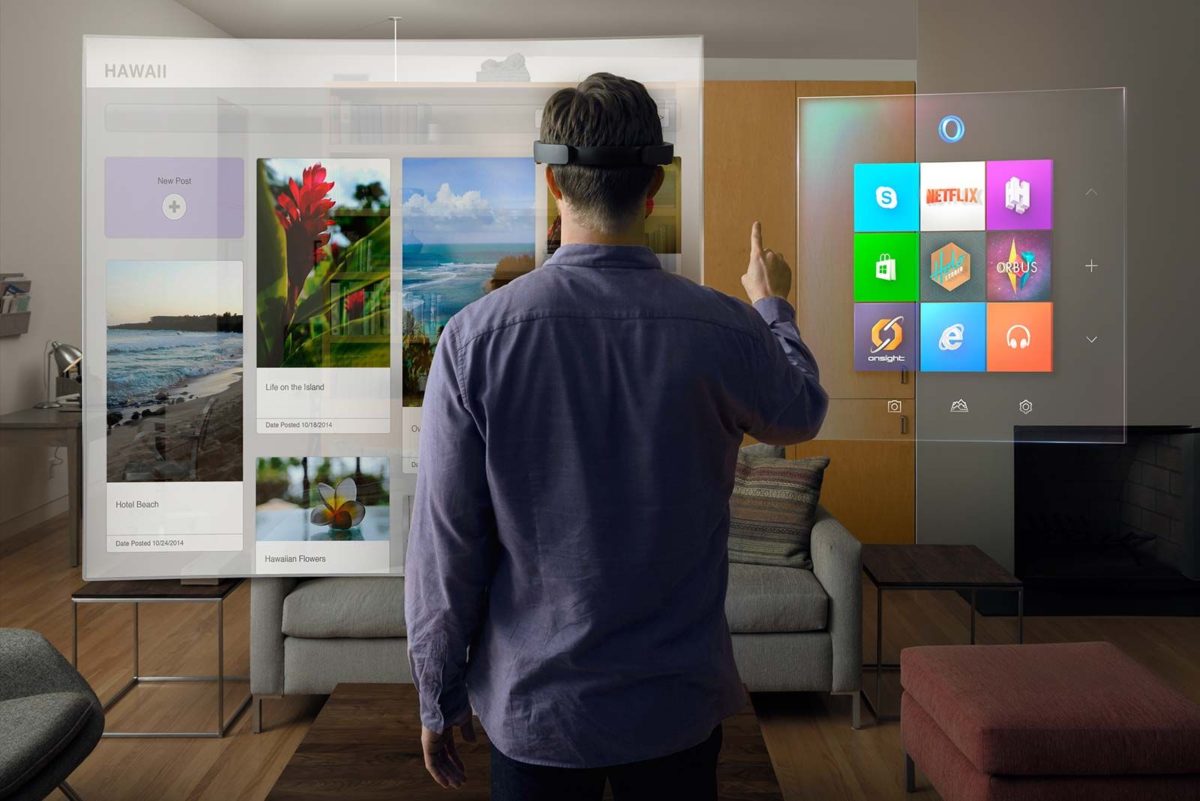When Nokia was overtaken by Apple in 2011, people sob its death. “At least the world has witnessed its glory”, said they. But Google glass never has its glory, it is a story about a gifted baby choked to death in his/her infancy. And just before the discussion of Google glass’s failure comes to an end, Microsoft has shifted the public eyes to its novel innovation-Hololens.
Microsoft Hololens is a pair of mixed reality head-mounted display smartglasses, using augmented reality as its core technology (Wikipedia). Many might argue the similarities between Google glass and Hololens. However, these two devices are totally different. Yes, Google glass also uses augmented reality, but in a limited way. Google glass enables consumers to capture images very fast and absorb simple information (weather, time, search result etc.) by just a glance. Basically It is a pair of regular glasses that has few functions of a smart phone. Hololens, however, is designed for much more intensive tasks. For example, full-scale 3D modelling with 3D print compatibility, audiovisual 3D virtual tourism and even Skype. In fact, Hololens is like a laptop, you don’t need it every moment, but you might find it of great help at work (Jon Mundy 2015).
One of the many reasons for Google glass’s failure is the health issue. Wearing internet-connected glasses certainly increases exposure to radio waves, this might pose health risks to consumer (Foxnews 2014). Hololens would face the same criticize as well, however, unlike Google glass, it is unlikely that people would wear Hololens 12 hours a day. By decreasing the time spent with the device, the risk of radiation exposure is lowered. Another advantage of Microsoft Hololens is its operating system. Unlike Google glass which is run on its own custom OS, Hololens is based on Windows 10. This implies a tremendous amount of applications is await in the future.
Having discussed all the above merits Hololens owns, price is still the current Achilles’ heel. Google glass is priced at 1500$, which is often criticized as nonconsumer-friendly. Hololens, with price of 3000$ each, is even worse. The device is therefore still somewhat of a prototype, and the current potential buyers are still “early adopters”, such as technology geeks or journalists.
“Thanks for exploring with us. The journey doesn’t end here” This is what you will see on the Google glass page at the moment. The device is been redesigned but we still have no idea when it will come back again. A visionary, bold product has fallen, let’s hope there won’t be another.
Reference:
Mundy, J. (2015). Microsoft HoloLens vs Google Glass: Can you compare the AR headsets?. [online] TrustedReviews. Available at: http://www.trustedreviews.com/opinions/microsoft-hololens-vs-google-glass [Accessed 23 Sep. 2016].
Fox News. (2014). Experts: Why Wearable Tech Could Pose Health Risks. [online] Available at: http://www.foxnews.com/tech/2014/10/20/experts-why-wearable-tech-could-pose-health-risks.html [Accessed 23 Sep. 2016].

